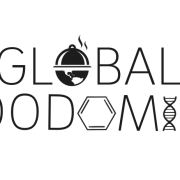Global FoodOmics: A Crowd-Sourced Window Into Microbes In Our Foods
January 25, 2018. By Mary Ellen Sanders, PhD , Dairy & Food Culture Technologies
Among the factors under our control, diet may be the most important determinant of our gut microbiota. Observations from the American Gut Project suggest that foods containing live microbes increase fecal bacterial diversity, which is generally associated with a healthy gut.
An initiative, Global FoodOmics, was launched earlier this year at the University of California San Diego under the auspices of the American Gut Project to learn more about bacteria in foods and the small molecules they produce. Dr. Julia Gauglitz is the project manager. Food samples (over 2000 have been collected to date) have been analyzed for their small molecule composition and will be tested by 16S rDNA sequencing to determine the bacterial species present. Although currently in its early stages, the aim for this project is to inventory the vast different foods consumed by people around the world.
Although many fermented foods (beer, bread, wine, kefir, many cheeses and others) rely on yeast or molds as fermentation or ripening agents, this project will aim to detect bacterial DNA, but these DNA approaches cannot distinguish between life and dead bacteria. Labels and other descriptors accompanying submitted food samples may help determine if the species detected are likely to be alive. Fermented foods that retain live bacteria are more likely to influence our colonizing microbiota.
The small molecules being assayed are not limited to the ones produced by microbes. They may be due to microbial growth in the food (by food fermentation microbes or perhaps by spoilage or food poisoning microbes), may be innate to the food, or may be intentional or incidental (e.g., pesticides) additives to foods.
The intent is to turn Global FoodOmics into a crowd-sourced project. It will join the American Gut Project as an avenue for citizens to directly participate in science and enable the project to make all of the data publically available to other researchers and clinicians.
It is notable that this project is not the first attempt to understand the microbial components of food. Food microbiologists for decades have been assaying foods for microbes used to produce food, responsible for food spoilage and linked to food poisonings. Recently, Prof. Bob Hutkins, University of Nebraska, on behalf of the International Scientific Association for Probiotics and Prebiotics (ISAPP) and with support from the National Dairy Council, embarked on a project to learn the state of knowledge about levels of live microbes in fermented foods. They dug into the published literature and emerged with “A survey of live microorganisms in fermented foods”, In Press at Food Microbiology. This paper gives us a summary of what is known about populations of live microbes in fermented foods, information that is very useful for people wanting to add live microbes to their diet.
Another effort to understand microbes in foods is the Consortium for Sequencing the Food Supply Chain, a partnership between IBM Research and Mars Inc. This project, focused on food safety, aims to develop a baseline of normal microbial communities in foods.
Both Global FoodOmics and the Consortium for Sequencing the Food Supply Chain will leverage modern DNA sequencing technologies to allow us better understand the microbes associated with foods. Global FoodOmics is the first project to understand the microbes and molecules in foods, by pairing small molecule metabolomics measurements with rDNA sequencing.





